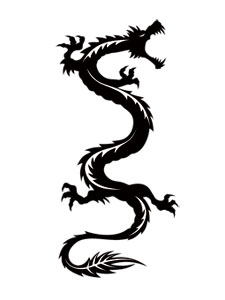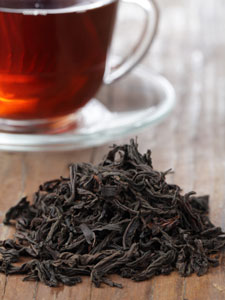Oolong Tea


Oolong teas fall between Green and Black teas on the oxidation scale. While this may seem an insignificant variable, it yields a dizzying array of tea styles and flavors. Literally translated, Oolong means "Black Dragon".
There are two primary theories on the origin of this name. The first is that the name is derived from the appearance of the original oolongs grown in the WuYi Mountains. The large, twisted leaves of the WuYi oolongs are quite oxidized and could be argued to look something like a black dragon. The second theory tells of a tea maker who was scared away from tending to his green tea by a black dragon. By the time he had returned, the leaves had partially oxidized, and so he named this new form of tea "Black Dragon."
The traditional home of oolong is China (in Guangdong and Fujian provinces) and Taiwan. These are the origins which set the standard for oolong production, which is one of the most time consuming, demanding styles to create. Today, oolong is also produced in small amounts by Darjeeling, Malaysia, and Korea, to name just a few. Some of the more famous examples include Fancy Formosa Silver Tip ('Formosa' is the former name of Taiwan), WuYi rock oolongs, Tung Ting, Ti Guan Yin and Pouchong.
Oolong is a semi-oxidized tea made from large, mature leaves, which can withstand the lengthy rolling and oxidizing process. (if standard tea production is the newest two leaves and a bud, oolong is often three or four leaves and a bud.) After being plucked, the leaves are withered to remove some moisture. The leaves are then rolled, and that can happen in several ways - twisting, curling into tight balls, etc. After rolling, the leaves are allowed to rest and oxidize for a while. For many oolongs, those two steps - rolling and oxidizing - are repeated several times, creating many layers of flavor and aroma.
This slow, gradual browning of the leaf is kept under control by periodic gentle heating in between steps. With green tea, we know that heat stops oxidation, but only at very high temperatures. Lower temperatures (below 130 degrees) will just slow it down. This extended processing is also what makes oolongs so complicated to make - one batch can take several days, from harvest to packing.
Oolong teas vary greatly not only in taste, but in preparation time. Darker oolongs (highly oxidized) generally need very hot or even boiling water to get the leaves to open up and release their oils. Greener oolongs (lightly oxidized) can take water just above the temperature at which green tea is brewed - around 185 or 190 degrees. Steep time is really to your preference; oolongs are designed to be infused multiple times, so whether you do two steepings at 4 minutes each or 10 at one minute is really up to you! The Chinese GongFu tea style (using a tiny Yixing clay pot stuffed with leaves) is all about the ceremonious art of serving oolong.
For voluminous, large leaf teas, it's recommended that you use two teaspoons per cup of water. The tightly rolled, balled oolongs are about one heaping teaspoon, depending on the strength of the flavor desired. All oolongs will unfurl to be quite large leaves, so keep that in mind when preparing them. They need legroom to swim around and don't yield good flavor when crammed into a tiny infuser or tea ball.
The Health Benefits of Oolongs
A number of companies have gone to great lengths in recent years to market oolong teas (under the names Wulong or Wu-Long) as weight loss teas. There is no scientific evidence to suggest that oolong teas are any more effective than other teas in aiding weight loss. ALL teas have the same benefits which are discussed in greater detail in the lessons on the health benefits of tea.
Monkey-Picked Oolongs
Another popular myth is that there are teas picked by highly trained primates. We've heard this myth told two ways. The first: Buddhist monks in China trained monkeys to climb up into the cliffs and out onto the branches to access hard to reach leaves. The second version is the monks threw sticks and stones at the monkeys already in the tea trees, causing them to jump around and break branches off, allowing the monks to easily retrieve the leaves. Regardless of your preferred version, there is no evidence today that monkeys are involved in any level of tea production. "Monkey-Picked" is used simply to refer to a rare production. It implies the tea came from a difficult to harvest place, higher and out of reach of anyone but, well, the monkeys. Rarer grades of Ti Kuan Yin are often called "Monkey-Picked Ti Kuan Yin."
 teaclass
teaclass
